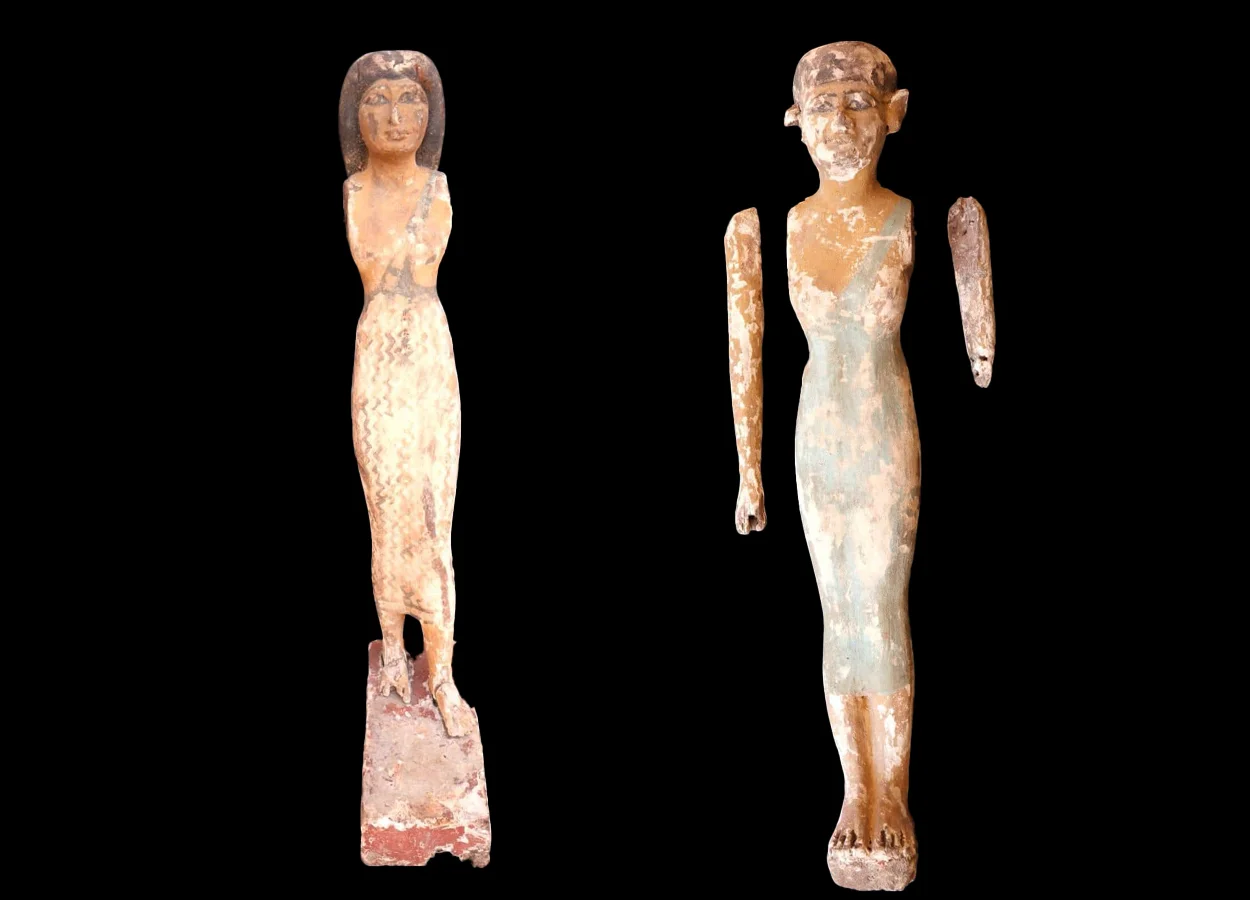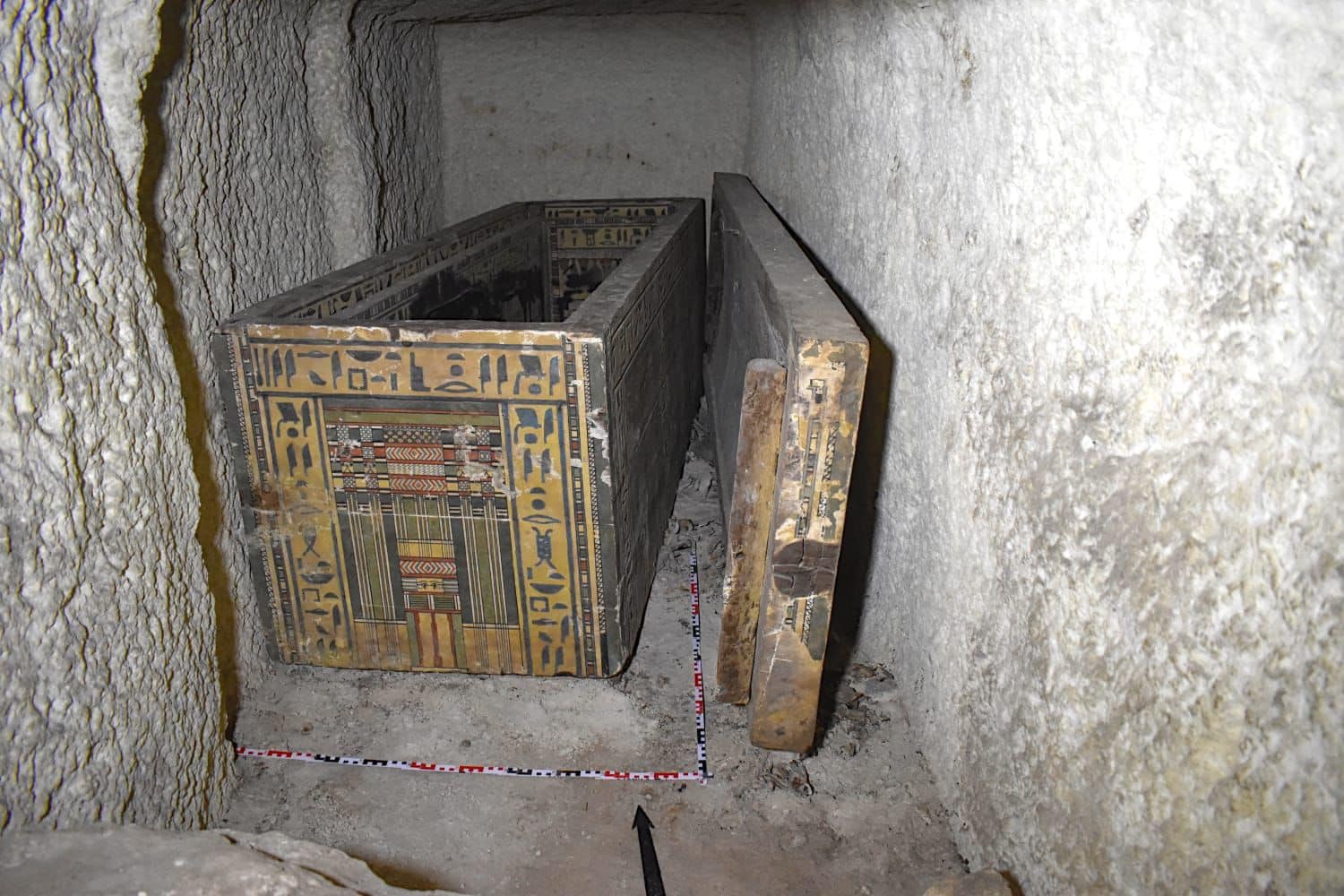Archaeologists from Sohag University and the Free University of Berlin have discovered two ornate wooden coffins in a burial chamber adjacent to the tomb of Djefaihapi in Asyut, Egypt.
Djefaihapi was an ancient Egyptian official during the reign of Pharaoh Senusret I of the 12th Dynasty. He served as the nomarch (provincial governor) of Asyut and was honoured upon his death with a grand rock-cut burial complex.
In literature, his name is found written in many other variants such as Hepzefa, Hapidjefa, Hapdjefai, and Djefaihap.
Excavations near his tomb have uncovered a burial chamber that housed the remains of Djefaihapi’s daughter, Edi.

The chamber is located at a depth of 15 metres and contains two ornately decorated coffins inscribed with funerary texts depicting the journey to the afterlife. The smaller of the two coffins measures 2.3 metres in length and was placed inside the larger 2.6 metre long coffin.
According to a press statement by the Ministry of Tourism and Antiquities, the tomb was robbed by thieves during antiquity, where Edi’s remains were removed from the coffins and her canopic jars smashed.
Archaeologists have recovered her skull and some skeletal remains, in addition to one of the coffin lids and wooden statues.
“Preliminary studies suggest that Edi died before reaching the age of 40 and suffered from a congenital foot defect,” said Mohamed Ismail, Secretary General of the Supreme Council of Antiquities (SCA).
Header Image Credit : Ministry of Tourism and Antiquities
Sources : Ministry of Tourism and Antiquities





